VERY RARE WWII D-Day Omaha Beach KIA Soldier's M1 Carbine Leather Rifle Scabbard


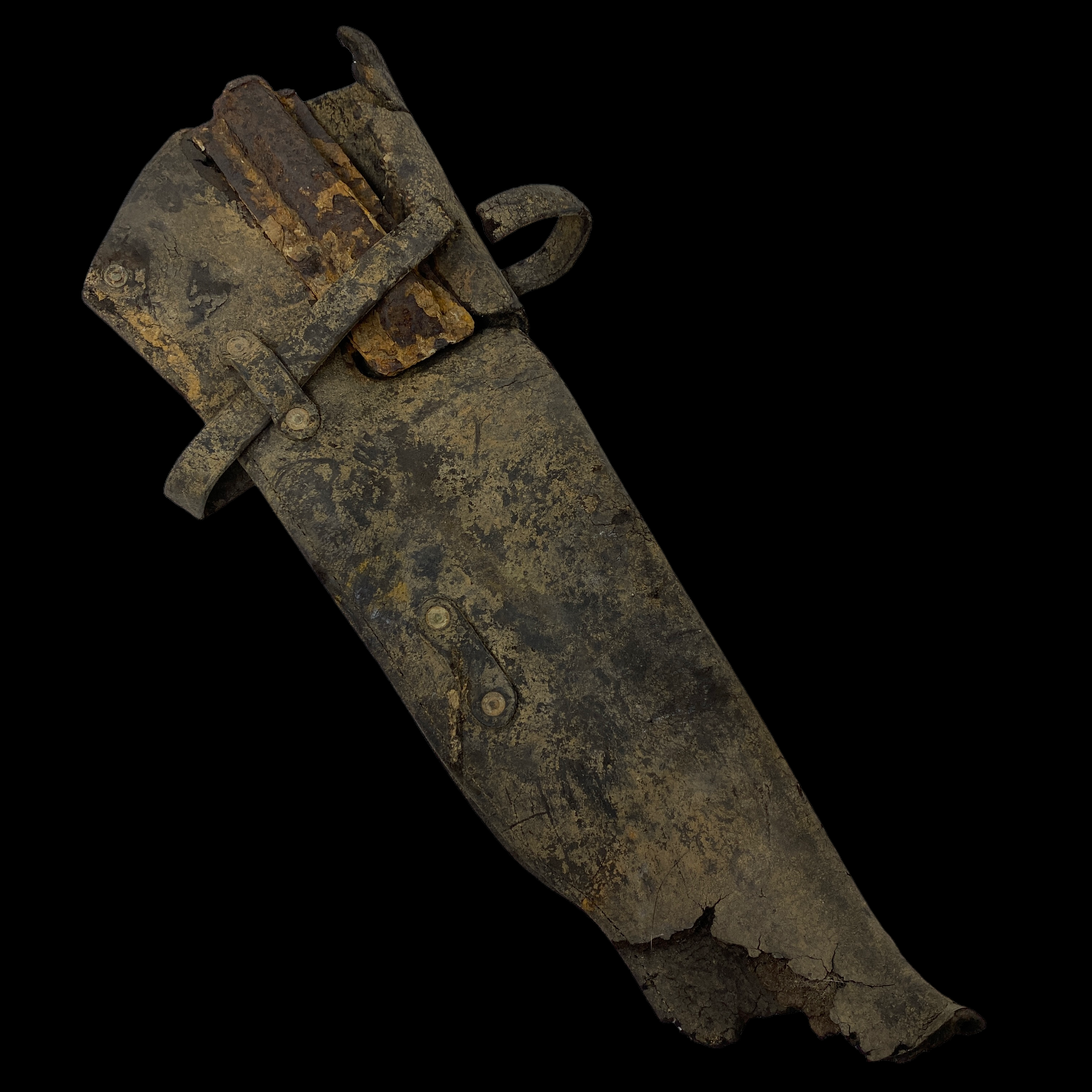




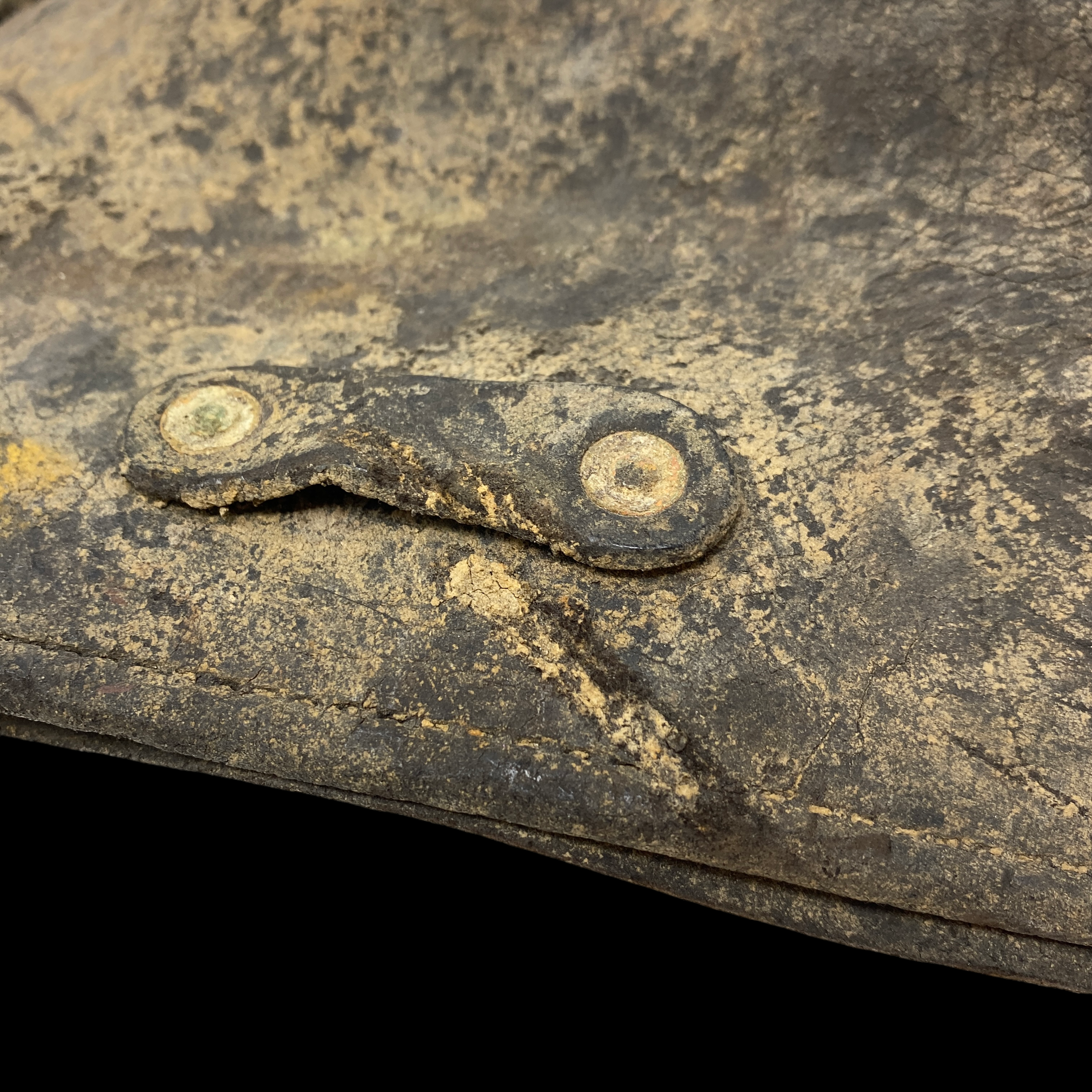



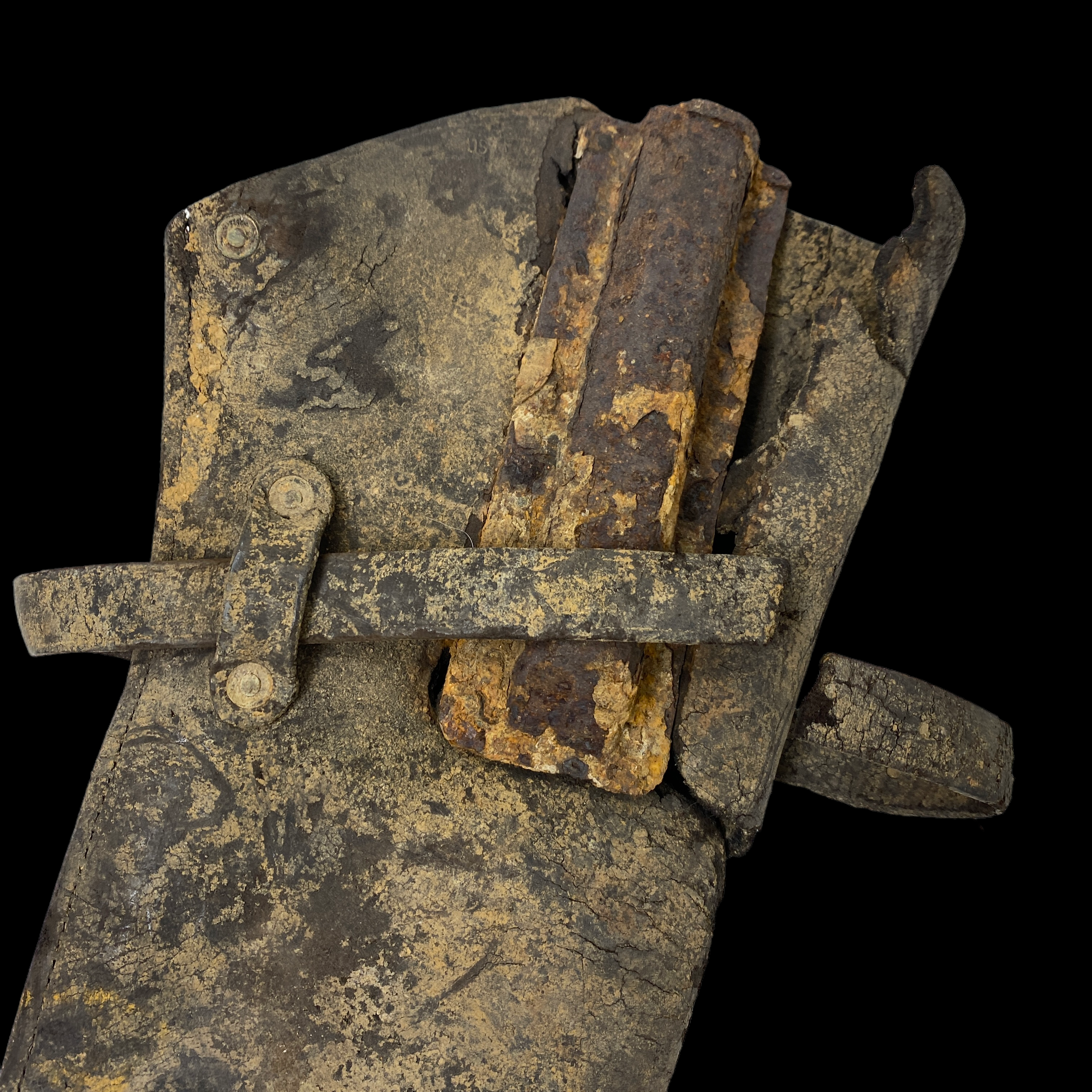



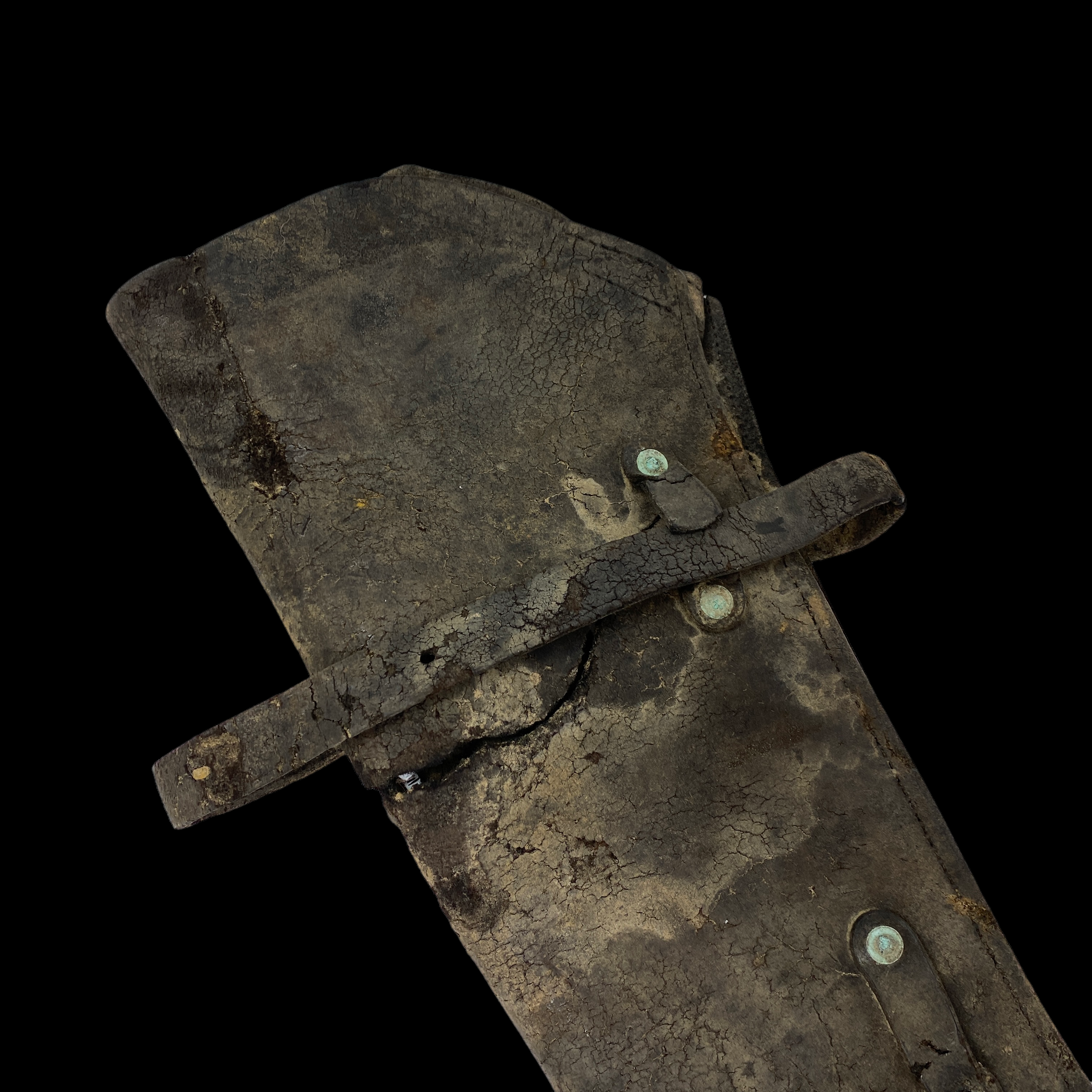
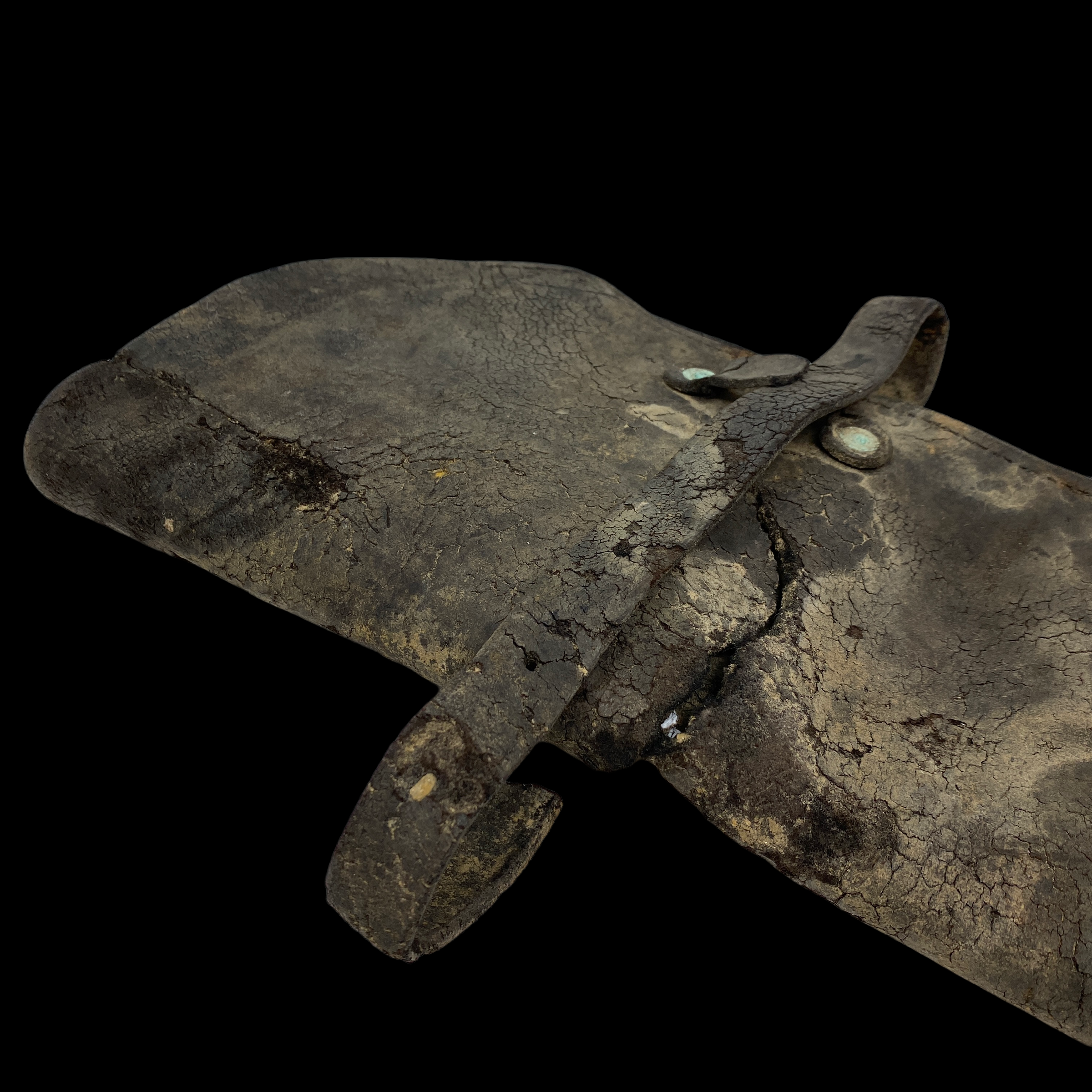

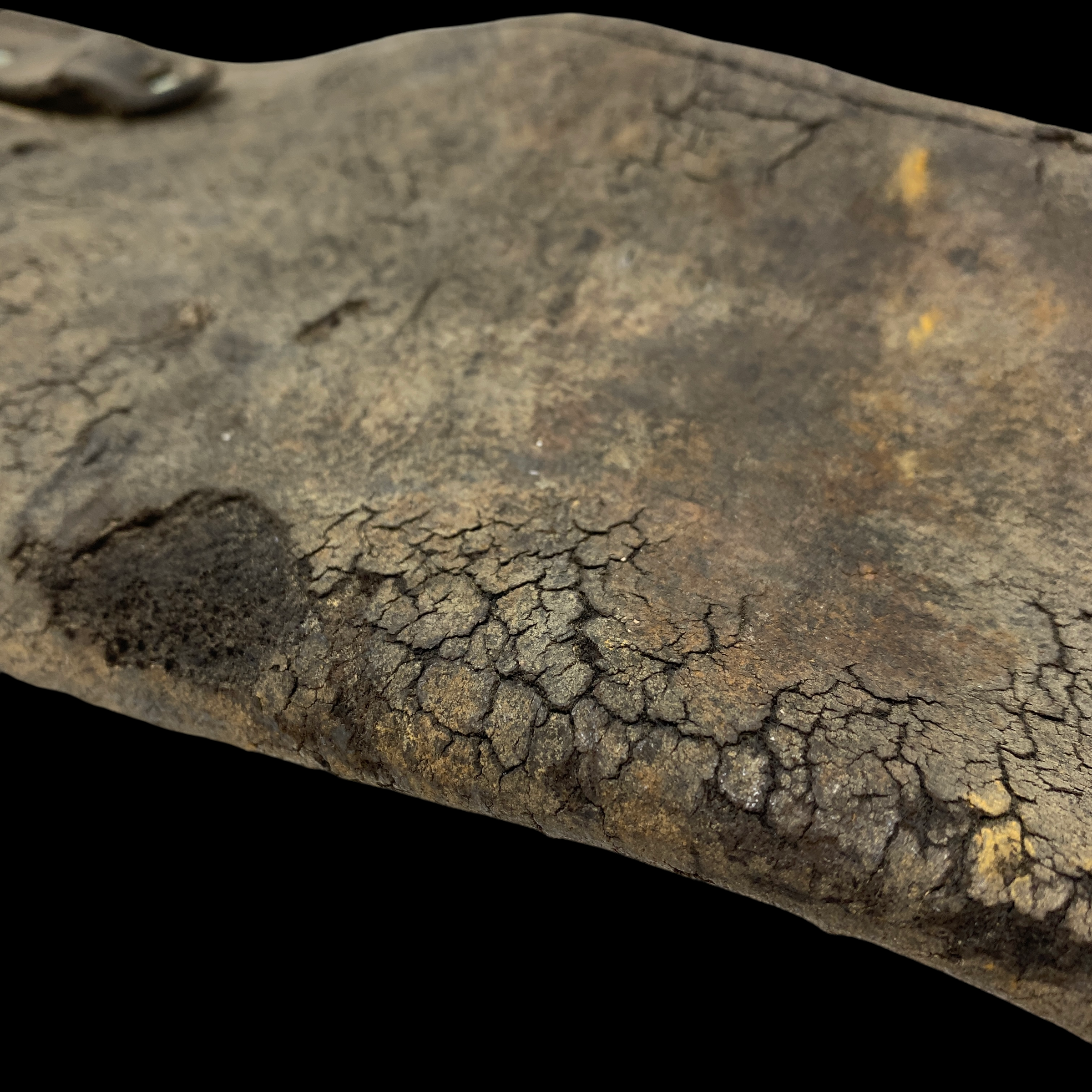
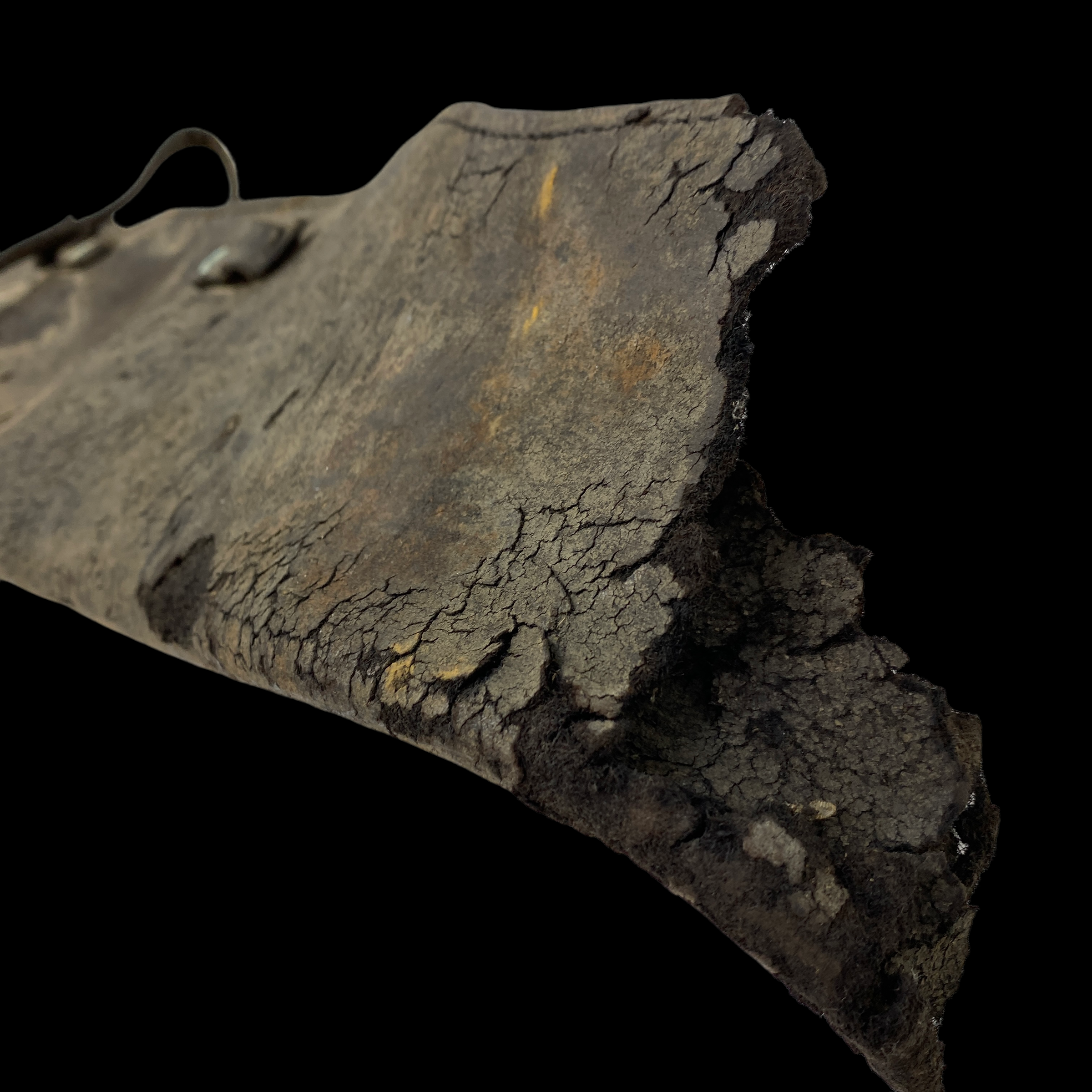
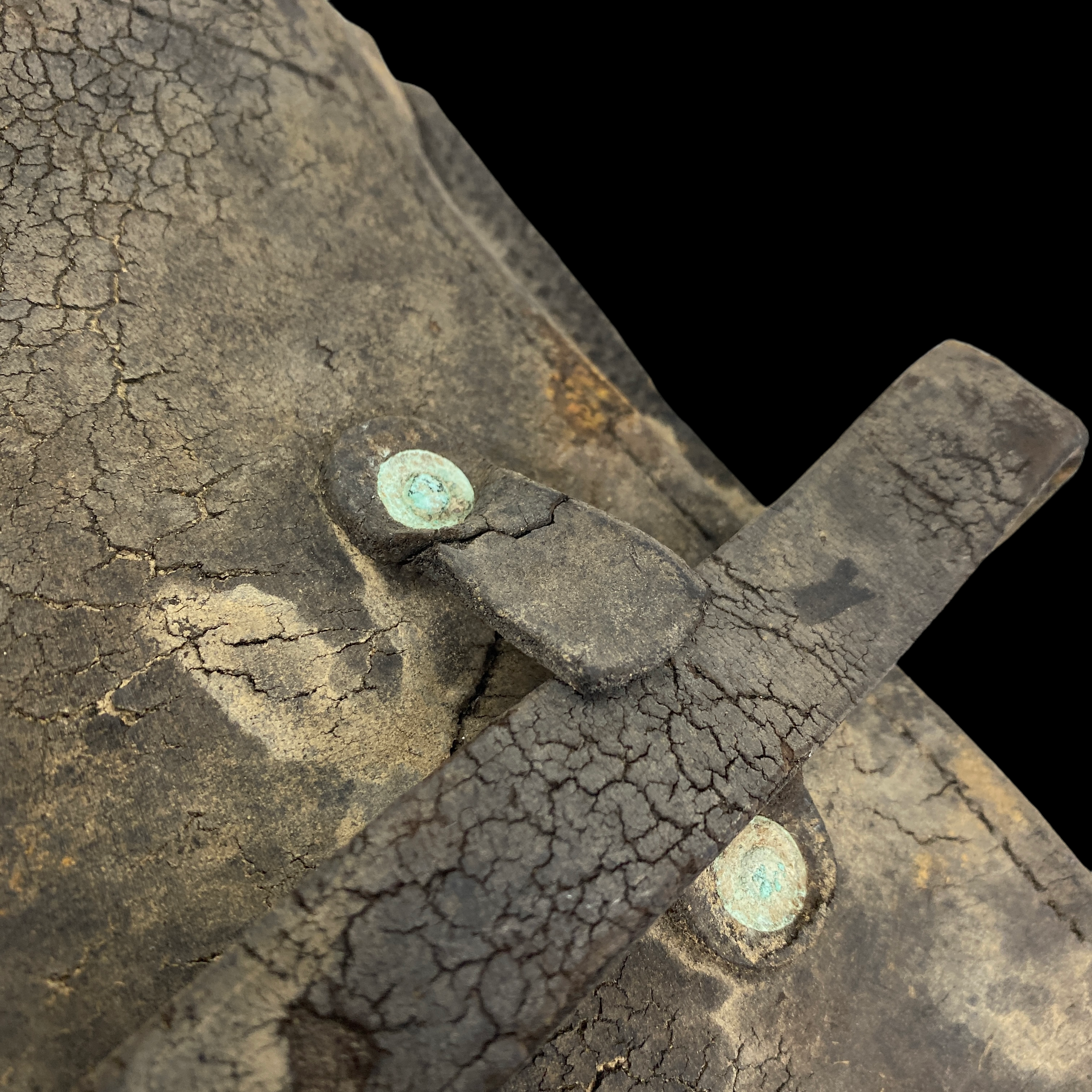
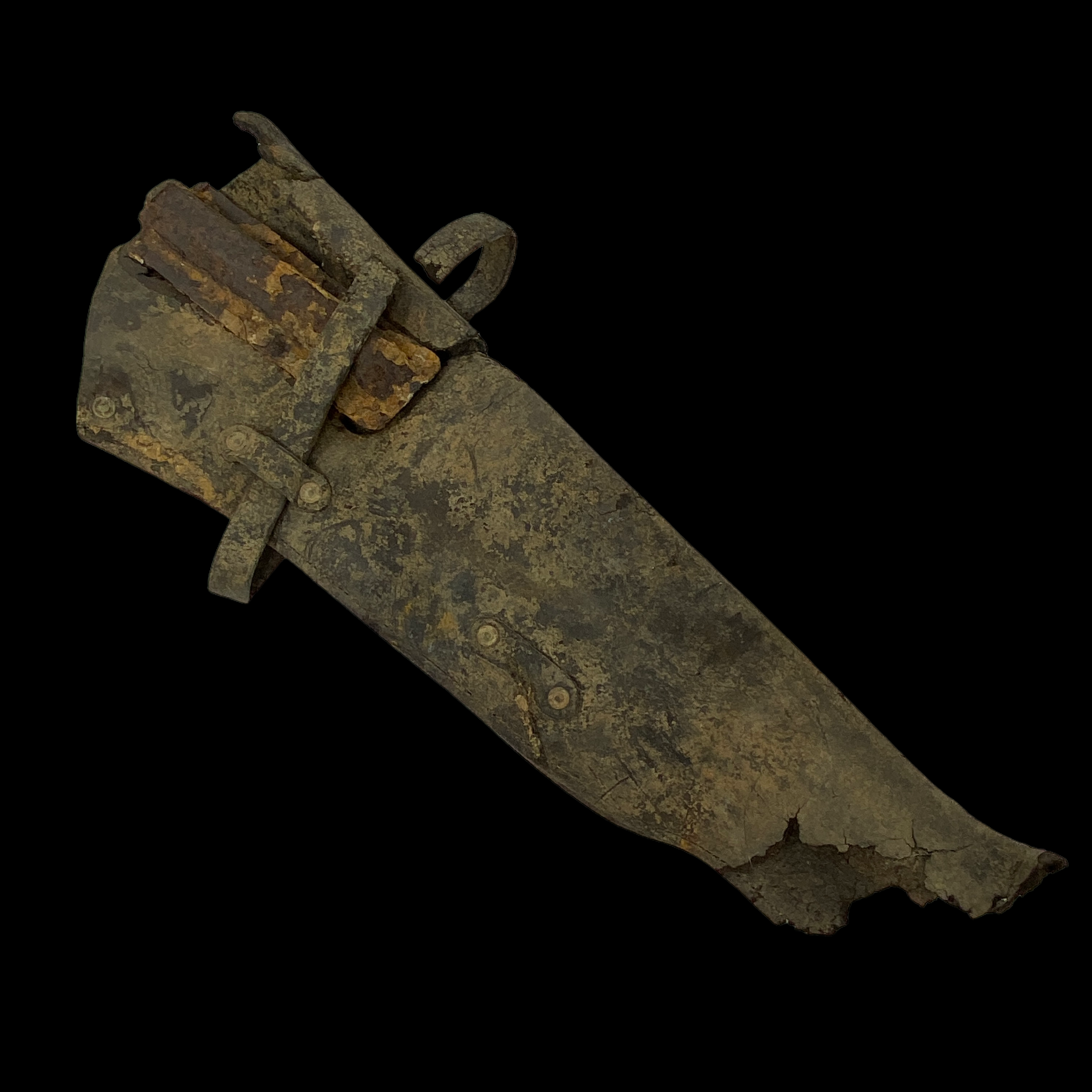
VERY RARE WWII D-Day Omaha Beach KIA Soldier's M1 Carbine Leather Rifle Scabbard
Comes with hand-signed C.O.A.
This incredibly rare and museum-grade piece of D-Day history was uncovered during a professional excavation of the D-Day Normandy beachhead of Omaha Beach.
On the morning of June 6, 1944, two U.S. infantry divisions, the 1st and the 29th, landed at Omaha Beach, the second to the west of the five landing beaches of D-Day. Opposing the landings was the German 352nd Infantry Division. Of its 12,020 men, 6,800 were experienced combat troops, detailed to defend a 53-kilometer (33 mi) front. The German strategy was based on defeating any seaborne assault at the water line, and the defenses were mainly deployed in strongpoints along the coast.
This combat infantry M1 Carbine leather rifle scabbard was carried by an unknown U.S. soldier of the 1st or 29th Infantry Division during the initial waves. It will forever be lost to history whether the U.S. soldier that carried this M1 Carbine leather rifle scabbard on D-Day was killed in action on Omaha Beach or if this riffle scabbard was accidentally dropped during the initial waves and confusion of the German machine gun fire and artillery as U.S. soldier rushed out of the Higgins boats and began their initial assault of Operation Overlord. Overall the M1 Carbine leather rifle scabbard case maintains in extremely salty and worn condition as it was left in ocean and sandy base since June 6th, 1944.
Casualties on Omaha Beach were the worst of any of the invasion beaches on D-Day, with 2,400 casualties suffered by U.S. forces. And that includes wounded and killed as well as missing. There is no concrete number for the German forces that were killed at Omaha Beach. Those records simply did not exist, and entire German units were wiped out virtually to a man. Any best estimate at the German losses on D-Day is a guess.
D-Day and Omaha Beach:
Omaha Beach linked the U.S. and British beaches. It was a critical link between the Cotentin Peninsula, also known as the Cherbourg Peninsula, and the flat plain in front of Caen. Omaha was also the most restricted and heavily defended beach. For that reason, at least one veteran U.S. Division (lst Infantry Division) was tasked to land there. The terrain was difficult. Omaha beach was unlike any of the other assault beaches in Normandy. Its crescent curve and unusual assortment of bluffs, cliffs and draws were immediately recognizable from the sea. It was the most defensible beach chosen for D-Day; in fact, many planners did not believe it a likely place for a major landing. The high ground commanded all approaches to the beach from the sea and tidal flats. Moreover, any advance made by U.S. troops from the beach would be limited to narrow passages between the bluffs. Advances directly up the steep bluffs were difficult in the extreme.
German strongpoints were arranged to command all the approaches and pillboxes were cited in the draws to fire east and west, thereby enfilading troops while remaining concealed from bombarding warships. These pillboxes had to be taken out by direct assault. Compounding this problem was the allied intelligence failure to identify a nearly full-strength infantry division, the 352nd, directly behind the beach. It was believed to be no further forward than St. Lo and Caumont, 20 miles inland. The V Corps was assigned to this sector. The objective was to obtain a lodgment area between Port-en-Bessin and the Vire River and ultimately push forward to St. Lo and Caumont in order to cut German communications (St. Lo was a major road junction). Allocated to the task were 1st and 29th Divisions, supported by the 5th Ranger Battalion and 5th Engineer Special Brigade.